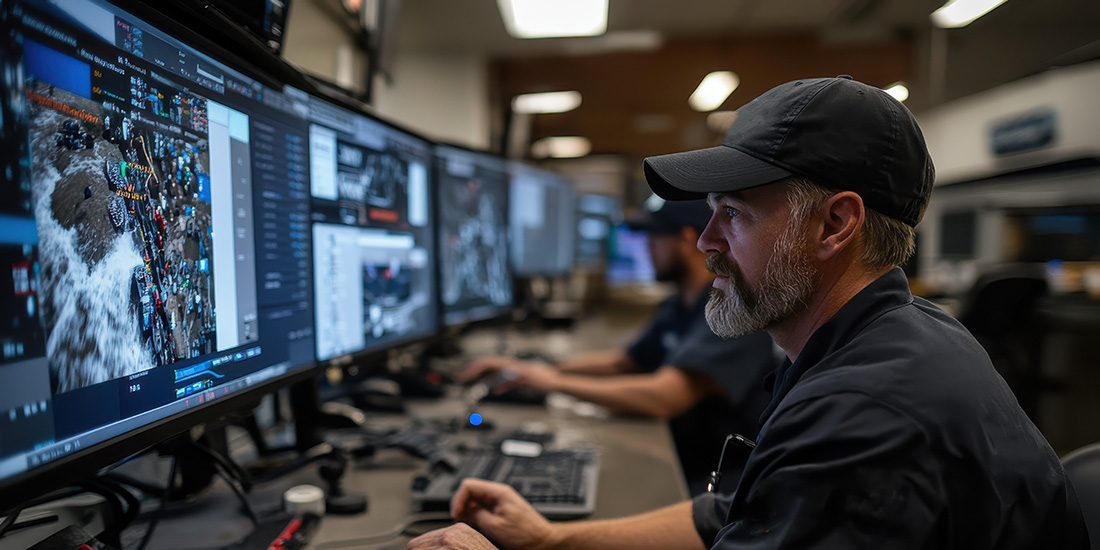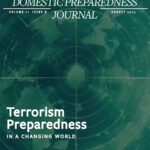Imagine a future world where an emergency operations center (EOC) has tools like artificial intelligence (AI) already in place, both vetted and verified to be trustworthy, and the EOC team is skilled in using those tools. Consider this scenario:
The earthquake struck Metro City at 0746 during the peak of the morning commute. Molly, the Metro City’s Class IV AI, had just seconds to act before shaking commenced, based on data from the state’s earthquake early warning system. Fortunately, mere seconds are a lifetime to an AI, and Molly didn’t waste any time.
While the state system automatically warned residents to drop, cover, and hold, Molly issued an EOC activation notification to all EOC personnel and senior elected and appointed officials. The advent of commercial, low-cost satellite service as a redundant, resilient communication system increased the probability most would receive the message. Using the location of each phone combined with damage assessment information, Molly safely routed personnel to the EOC. Officials even began to immediately get to work on the situation at hand while on their way to the EOC, thanks to Molly’s assistance.
Simultaneously, Molly engaged the community. It contacted classrooms, day cares, and long-term care facilities with audience-appropriate warnings and assurances immediately after the earthquake, translated as necessary. The AI was already well-known to the students, having built trust through participation in emergency drills and other school events. In fact, a contest among third-grade students years ago is how the AI got its name.
Following detailed instructions, Molly began streaming damage assessment information that relied on thousands of sensors – public and private – spread throughout the city and augmented by information from calls to the public safety answering point (911), by public safety radio traffic, and by social media posts. After notifying the Federal Aviation Administration that it was activating pre-disaster authorization for flight, Molly launched its unmanned aerial systems as mobile sensor platforms and initially assigned them to fill in reporting gaps caused by damage.
Meanwhile, the EOC director verbally confirmed the activation decision and instructed Molly to initiate Protocol 1. This triggered a series of scripted actions for Molly to accomplish before the EOC team arrived. It included arranging meetings for the director with the mayor and department heads, sending an emergency declaration to the mayor for approval, releasing previously approved standard public-safety messaging to multiple communications platforms, and more. Most importantly, it authorized Molly to function as the common platform for data, information, and intelligence sharing and collaboration between the city and supporting agencies at all levels, non-governmental organizations, and volunteers, as designated in the city plan and in support of disaster information transparency goals. Molly is capable of filtering and presenting data, information, and intelligence based on EOC personnel roles, responsibilities, and learning preferences.
Under Protocol 1, an automated request for mutual aid was sent to EOCs outside the impact area via the interstate Emergency Management Assistance Compact. These were designated partner agencies that had agreed ahead of time to respond when needed. Within minutes, the staffing of the Metro City EOC was augmented by virtual responders equipped with tools like augmented reality and virtual reality technology and capable of maintaining the requisite level of staffing for weeks if necessary. Similar arrangements were in place between city department operations centers and their counterparts in other jurisdictions. The extensive training, planning, simulations, and exercises with these partners now paid off. Had the Metro City EOC been rendered inoperable, these same EOCs were authorized to step in and take over with support by Molly.
For responders in the field, Molly created a human-impact analysis based on patterns of life, cell phone location data, building permits, and other inputs to guide responders to the most likely areas where casualties and people trapped could be found. This was only possible through a public records act that established a local, nonprofit, government-funded data security company operated by and for the public to protect private data while ensuring responders had the information they needed during emergencies. This AI-operated system authorized the release of private data and then monitored how it was used by government officials. When the emergency was over, it ensured all data was erased.
Much of the technology in this story either already exists or is on the near horizon. Augmented and virtual reality, digital twins (virtual models of real-world objects or places), large language models, virtual mutual aid, sensors, analytics, modeling, unmanned autonomous systems, and a common AI platform (e.g., Molly) are just some examples of tools that are beginning to transform how disasters are managed.
This next-generation EOC concept does not promise perfect disaster management, but it does mean responders at all levels will have better situational awareness, plan more efficiently, and act faster. EOC team members will have time to collaborate, focus on solutions, and work at a pace that is sustainable. The revolution of EM-capabilities powered by AI is only just beginning. Currently, many technologies have the potential to transform emergency management. What is needed is a commitment to a rapid, coordinated design process that can transition technology to the EOC. This will involve fundamental changes in how disasters are managed.
What Is Next for the Next-Generation EOC?
To assess the feasibility of this vision for the “EOC of the Future,” an in-depth landscape assessment, stakeholder outreach, and a series of tabletop exercises explored how the rapid and accelerating pace of advancements in science and technology can be highly disruptive to emergency services.
In moving the needle toward the EOC of the Future, an assessment of the history of EOCs, a review of current emergency management research and development (R&D) and EOC operations, and feedback from EOC team members identified recurring foundational concepts for the future reflected in Metro City:
- Next-generation data management
- Continuous, real-time situational awareness
- AI automation and human-machine teaming
- Human-centered design of workspaces
- Hybrid EOC operations
- Resilient system design
- Whole community approach
- Forward-leaning workforce development
However, every new technology comes with new challenges – particularly funding, interoperability, and policy barriers. For such futuristic concepts, fostering trust and buy-in from end-user communities is a formidable obstacle, particularly as tasks AI is permitted to take on increase in complexity and consequence. Trust can be built through a collaborative and iterative process of research and development, transparency, processes for validating information, commitment to safety, and experience. Most important is the need for an AI that is specifically developed for responders at all levels, including EOC operations, instead of adapting existing systems. All of this will need a foundation of ethical guidelines and best practices developed in partnership with the community.
The Future Is Now
Returning to the EOC of the Future scenario, a next-generation combination of tools has enabled efficient, integrated response:
Although it might seem to be almost sentient, Molly represents a relatively simple system that depends on several plans, protocols, and instructions developed beforehand by the emergency management team.
Gone are written situation reports that are out of date before they were published. Sensor-enabled continuous situational awareness coupled with modeling and simulation describes the current state and possible future changes in status and outcomes. This has the potential to change how planning is done as well. With all personnel drawing from the same well, resource conflicts are reduced and operational timing, sequencing, and coordination improved. Planners can quickly model options and, to some degree, identify second- and third-order effects.
Such improvements may also turn the vision of a whole community response into reality. Molly provides the means for registering volunteers, assigning them to appropriate missions and tasks, monitoring their activity, and coordinating with responders.
It sounds futuristic, but in today’s era of AI-enabled transformation and productivity, the EOC of the Future is feasible. By bringing together the right mix of end-user-informed vision building, testing, and evaluation and by adapting policy and standard operating procedures, a more resilient emergency management system can emerge that stands ready to face the challenges of tomorrow. The next-generation EOC will blend operators and optimal tooling to forge a path toward a safer, more secure future. Getting there will take not only continued research and development of emerging technology but also engagement from EOC personnel within the R&D community to discern how it can best meet their needs today and in the future.

Nick Betzsold
Nick Betzsold is a data scientist at Pacific Northwest National Laboratory (PNNL) where he has led project tasks devoted to AI and machine learning, statistical computer programming, and risk tool concept of operations development. He joined PNNL as an undergraduate intern within the Applied Statistics and Computational Modeling group and conducted research in national security and infrastructure risk analysis, power grid data analytics, R Shiny web app development, and various data/statistical analysis projects. He obtained his master’s degree in data science at Northwestern University. Today, his work is primarily within PNNL’s National Security Directorate, and he serves as the Aviation Security and Soft Targets Homeland Security Subsector Lead.
- Nick Betzsoldhttps://www.domesticpreparedness.com/author/nick-betzsold

Grant Tietje
Grant Tietje is a former paramedic, police officer, and emergency manager. He was a program manager at Pacific Northwest National Laboratory (PNNL) and led research and development of technology solutions for first responders. He is now president of Front Range Planning, a company dedicated to supporting first responders through training, exercises, and planning.
- Grant Tietjehttps://www.domesticpreparedness.com/author/grant-tietje
- Grant Tietjehttps://www.domesticpreparedness.com/author/grant-tietje
- Grant Tietjehttps://www.domesticpreparedness.com/author/grant-tietje





